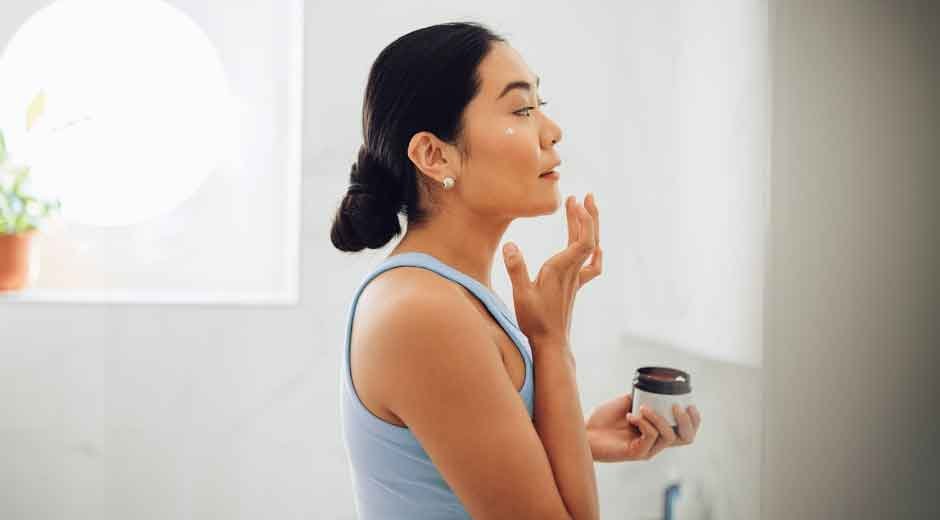A complete skincare routine is not just about glow or hydration; it is also about long-term protection and repair. SPF 30 sunscreen plays a vital role in protecting skin health and minimising further damage, especially for those managing scars, uneven skin tone, or sensitivity.
While products may help reduce the appearance of scars, such as post-acne marks or atrophic scars, without proper sun protection, these concerns can worsen. That is why making SPF 30 sunscreen the foundation of a skincare routine is one of the most effective ways to support the skin’s healing process.
Why SPF 30 Sunscreen Deserves a Starring Role
Every time the skin is exposed to the sun, whether it is a hot summer day or a cloudy afternoon, UV rays can trigger pigmentation and slow down the healing process of scars. Broad-spectrum SPF 30 sunscreen protects the skin from both UVA and UVB rays, which can worsen existing marks and contribute to an uneven skin tone.
Those with acne-prone skin or healing scars often notice that unprotected exposure leads to darker, more stubborn marks. Whether scars are new or old, daily use of SPF 30 sunscreen helps protect the skin’s surface while supporting longer-term care routines aimed at scar reduction.
The Ideal Morning Skincare Routine Featuring SPF 30
An ideal morning skincare routine should be simple, structured, and effective. Here is a recommended routine that prioritises skin health while building around the power of SPF 30 sunscreen.
- Gentle Cleanser
Start the day with a mild cleanser that removes overnight buildup, oil, and any residual products. It should clean without over-drying, as stripping the skin can weaken its barrier, which is especially important when healing scars or sensitive areas.
- Hydrating Toner or Essence
A toner or essence helps prepare the skin for the next steps. Look for ingredients like hyaluronic acid or panthenol to keep the skin soft and hydrated, which is essential for maintaining elasticity and texture during the scar healing process.
- Serum
This step allows for targeted care. Serums with ingredients like niacinamide, vitamin C, or peptides can support skin clarity and reduce the appearance of pigmentation. For those recovering from breakouts, this is also a good time to include formulas that support an even tone but not necessarily treat acne itself.
- Lightweight Moisturiser
A moisturiser helps to lock in hydration, calm the skin, and create a smooth base. For oily or acne-prone skin, choose non-comedogenic, gel-based moisturisers. Whereas for dry or scarred skin, a creamier texture may provide better barrier repair.
- SPF 30 Sunscreen
This is the most important step. Always apply SPF 30 sunscreen generously across the face and neck. It should be broad-spectrum and ideally suited to one’s skin type. Sunscreen should be the last layer in the skincare routine before makeup or stepping outdoors.
How to Layer Products for Maximum Effectiveness
Product layering matters. Begin with the thinnest formulas and work up to thicker, more occlusive ones. The general order is:
Cleanser → Toner → Serum → Moisturiser → SPF 30 Sunscreen
Why Sunscreen Always Goes Last Before Makeup
SPF 30 sunscreen always goes last because it needs to stay on top of the skin to create a physical or chemical shield against UV rays. If applied earlier in the routine, it can be diluted or disrupted by other products layered over it.
How to Reapply SPF 30 Sunscreen Throughout the Day
Sunscreen works best when reapplied regularly. Even a high-quality SPF 30 sunscreen provides optimal protection for about two to three hours, especially under the sun, sweat, or pollution. Here are a few practical ways to reapply during the day:
- Use sunscreen mists or sprays designed to be worn over makeup for convenient top-ups.
- For bare skin or makeup-free days, lightly pat in another layer of cream-based SPF after blotting excess oil.
- Keep compact SPF powders or sticks in a bag for on-the-go touch-ups.
This is especially important for individuals dealing with post-acne scars or discolouration. Without regular reapplication, sun exposure can cause newly formed scars to darken or become more visible.
Night-time Skincare to Support Sun-exposed Skin
At night, the skin enters repair mode. A consistent evening routine helps reverse environmental damage and prepare the skin for treatment products that support scar recovery. Evening routine essentials include:
- Makeup/sunscreen Removal: Always begin with a gentle cleanser or cleansing balm to remove the day’s SPF 30 sunscreen, pollutants, and makeup residue.
- Repairing Serum: Choose ingredients that promote regeneration, such as peptides or mild exfoliants.
- Moisturiser: Seal everything in with a nourishing cream to strengthen the skin barrier.
This is also the right time to apply targeted scar products, particularly for older scars or atrophic marks. These formulas work best overnight, away from sunlight, with full absorption into the skin.
Adjusting Your Routine to Match Your Skin’s Needs
Not everyone’s skin behaves the same way, especially when scars are involved. A routine built around SPF 30 sunscreen should still be flexible enough to suit individual needs.
- For Oily Skin: Use a SPF 30 sunscreen and lightweight moisturisers to reduce congestion.
- For Dry Skin: Add a hydrating serum and use a creamy sunscreen for added nourishment.
- For Pigmented Scars: Consider using vitamin C or niacinamide under sunscreen to help even out tone.
People often combine sun protection with the best cream for pimple marks, expecting fast results. While such creams may help with temporary discolouration, deeper scars, especially atrophic ones, require more time and a consistent care routine.
Common Mistakes to Avoid with SPF 30 Sunscreen
Even when using quality SPF 30 sunscreen, mistakes can compromise its effectiveness. Avoid these common errors:
- Not Using Enough: Make sure to apply a generous layer that evenly covers your face and neck for effective protection.
- Skipping Application on Cloudy Days: UV rays penetrate clouds and glass.
- Assuming SPF in Makeup is Enough: It rarely provides sufficient protection on its own.
- Forgetting Neck and Ears: These areas also need daily protection.
- Not Reapplying: One morning layer is not enough for a full-day defence.
Each of these missteps can increase the chances of scar pigmentation or delay visible improvement.
Get Consistent Sun Protection
A skincare routine built around SPF 30 sunscreen is one of the most effective ways to protect and support the skin. Targeted scar treatments and the best cream for pimple marks are most effective when paired with consistent sun protection, helping the skin heal and improve visibly.
Daily application, correct layering, and timely reapplication of SPF 30 sunscreen can make all the difference in how the skin heals and responds to long-term care. A complete routine focuses on preventing new scars and giving the skin every opportunity to recover safely and steadily. Trusted brands like Mederma offer valuable support with their scar care expertise.





